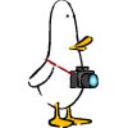Yahoo Answers is shutting down on May 4th, 2021 (Eastern Time) and beginning April 20th, 2021 (Eastern Time) the Yahoo Answers website will be in read-only mode. There will be no changes to other Yahoo properties or services, or your Yahoo account. You can find more information about the Yahoo Answers shutdown and how to download your data on this help page.
Trending News
My cam only goes to F8. I have noticed my water is overexposed in pics. What to do? I am thinking of stacki?
ng my nd filter and polarizer. Any advice?
panasonic dmc fz28 i am blocked out from the iso it's set at 200 ???
4 Answers
- Steve PLv 71 decade agoFavorite Answer
Placing those filters on the camera is not going to help a thing. All that will do is give you the same overall exposure at a much lower shutter speed / aperture, and if you are not tripod mounted, the shots will then be very blurred.
Your problem is in how you, and the camera, are metering the scene. The majority of the area is much darker than the water. The camera is reading this area and making an exposure setting based on this data. The exposure is thus very nice for the ground, but the bright water is way overexposed.
What you are dealing with is a huge tonal range in the scene that your camera cannot expose properly for in a single shot. If you use spot metering and meter the water, it will be properly exposed, but the surrounding ground will be underexposed, i.e. much too dark. Using a graduated neutral density filter will not work due to the placement of the water in the scene.
Your only real cure is to make exposures for each area. You will need to use a tripod. Place the camera in APERTURE PRIORITY so your depth of field will remain constant. Take a spot reading of the landscape and note the shutter speed. Then take a spot reading of the water and note the shutter speed. Place the camera on the tripod and take one photo with the exposure, (shutter speed), set for the ground. Then change the shutter speed for the water exposure. Take another photo. Be sure the camera remains in the same position.
Then you will have to combine each photo in an editing program such as Photoshop and derive one overall correctly exposed photo. So for instance if you place the over exposed water shot on top of the properly exposed water shot, you will then take the eraser tool to erase away the overexposed water in the top layer.
As said in another answer. You may find a different time of day to give you a more overall matched tonal range in the scene so you can properly expose for both the water and surrounding area.
steve
- sant kabirLv 71 decade ago
I agree with the filter option , but even that would be limiting . Along with it . plan your shoots as per the limitation of your camera. Morning and evening light is good for photography and you don't need to go beyond F8.
- derwoodLv 51 decade ago
yeah stacking your nd and polarizer will help. they also make nd filters up to 400x if you want to buy. i guess also shorten your shutter speed and lower your iso. other than that you are running out of options for exposure.



